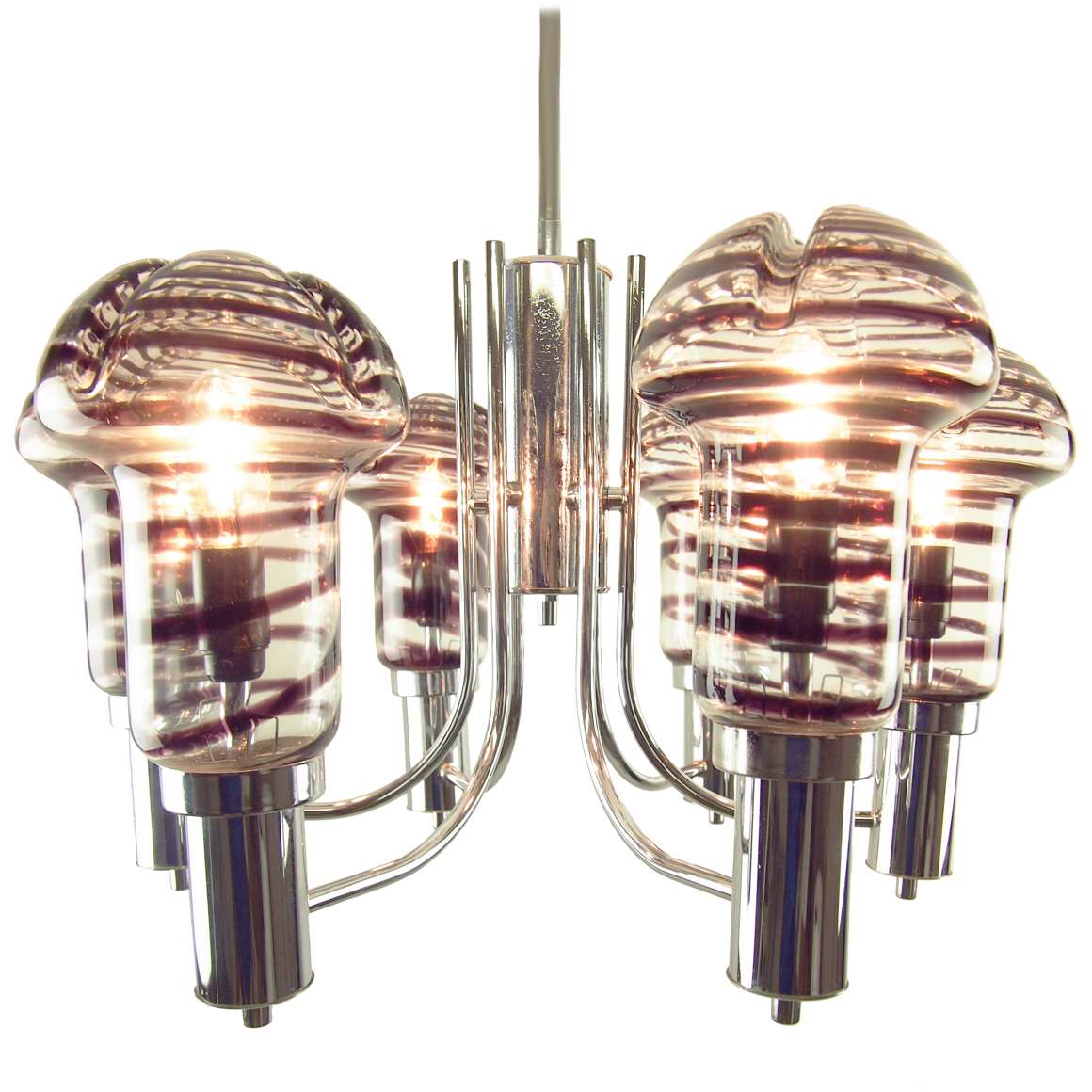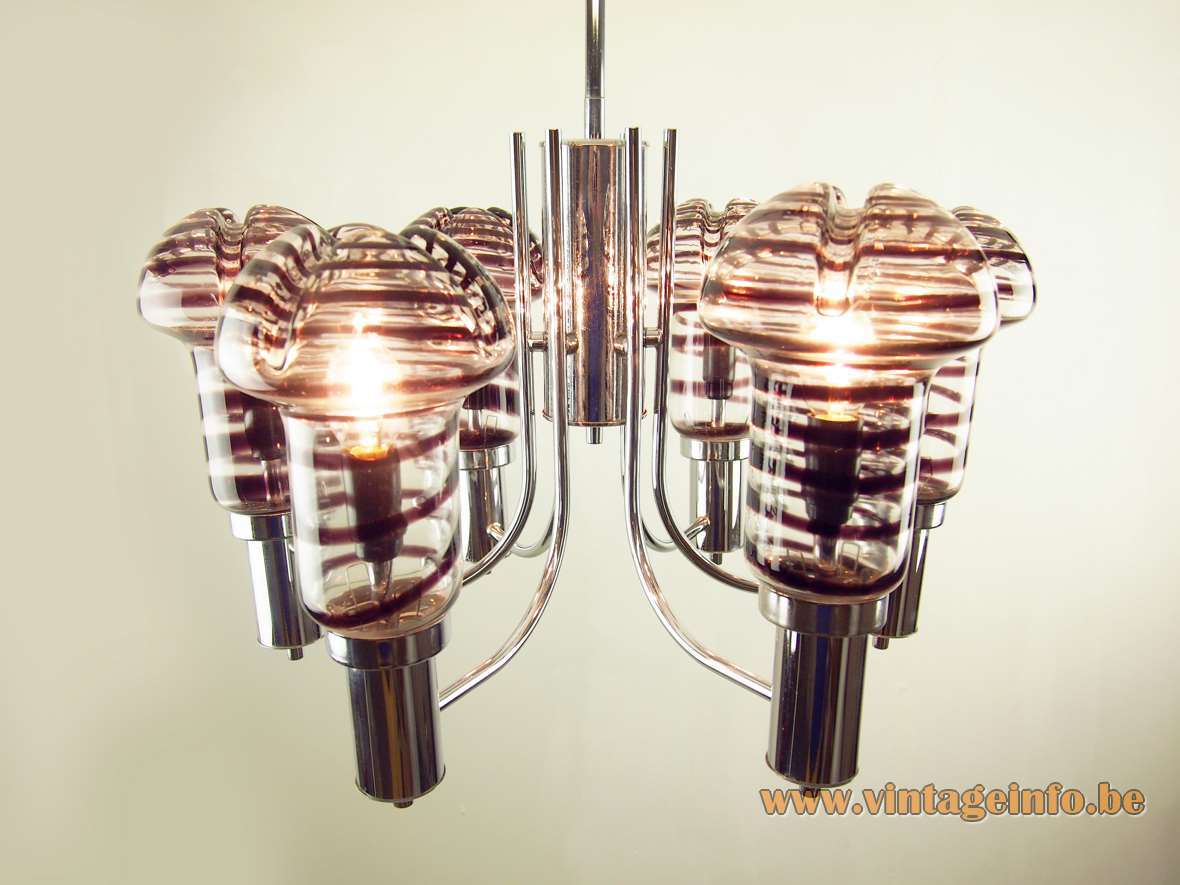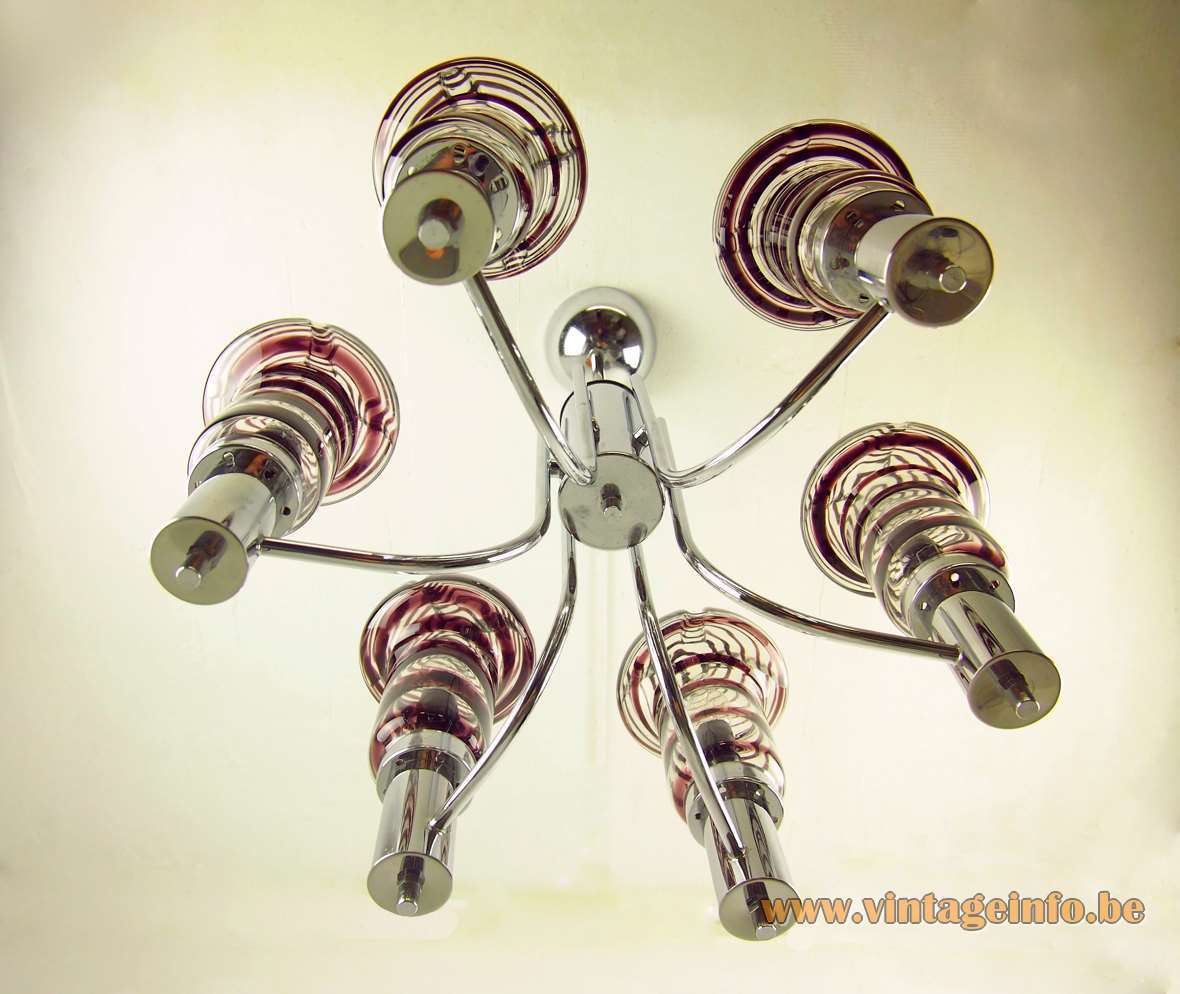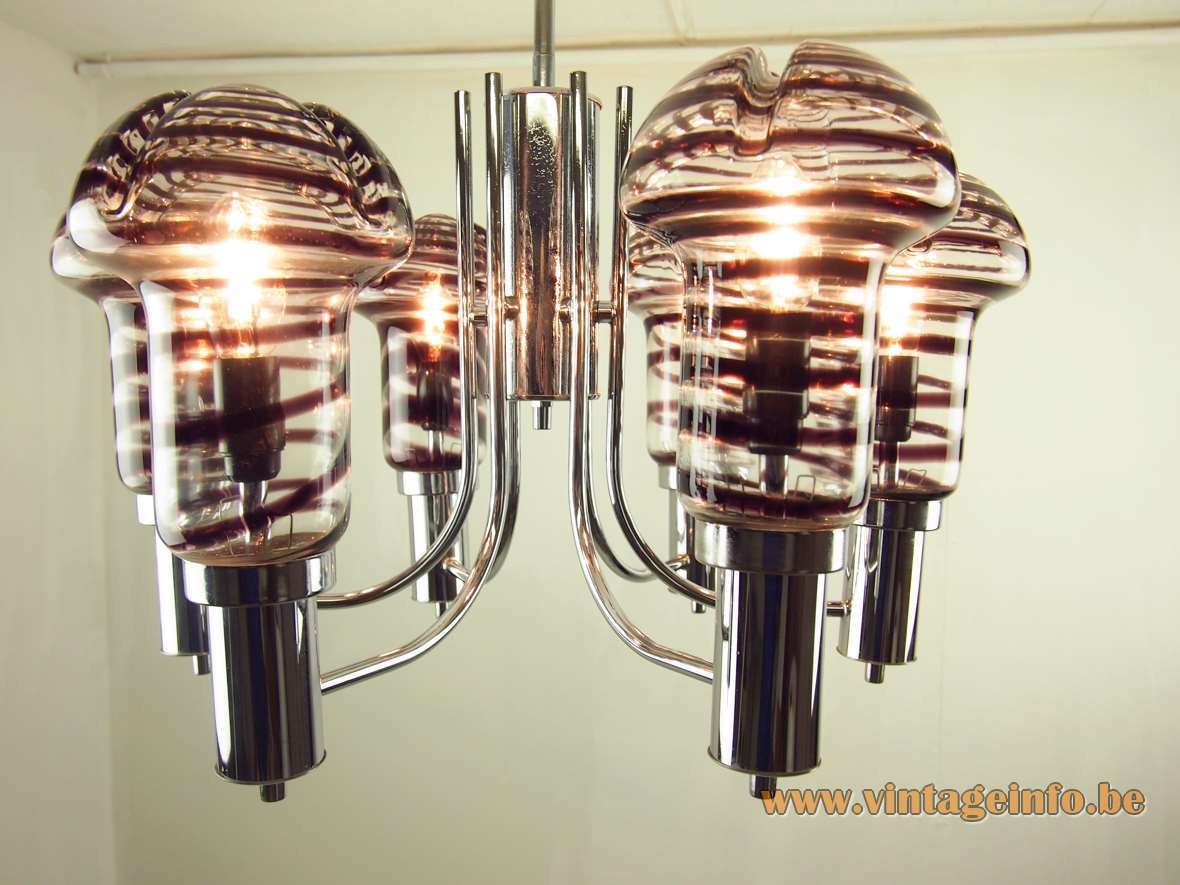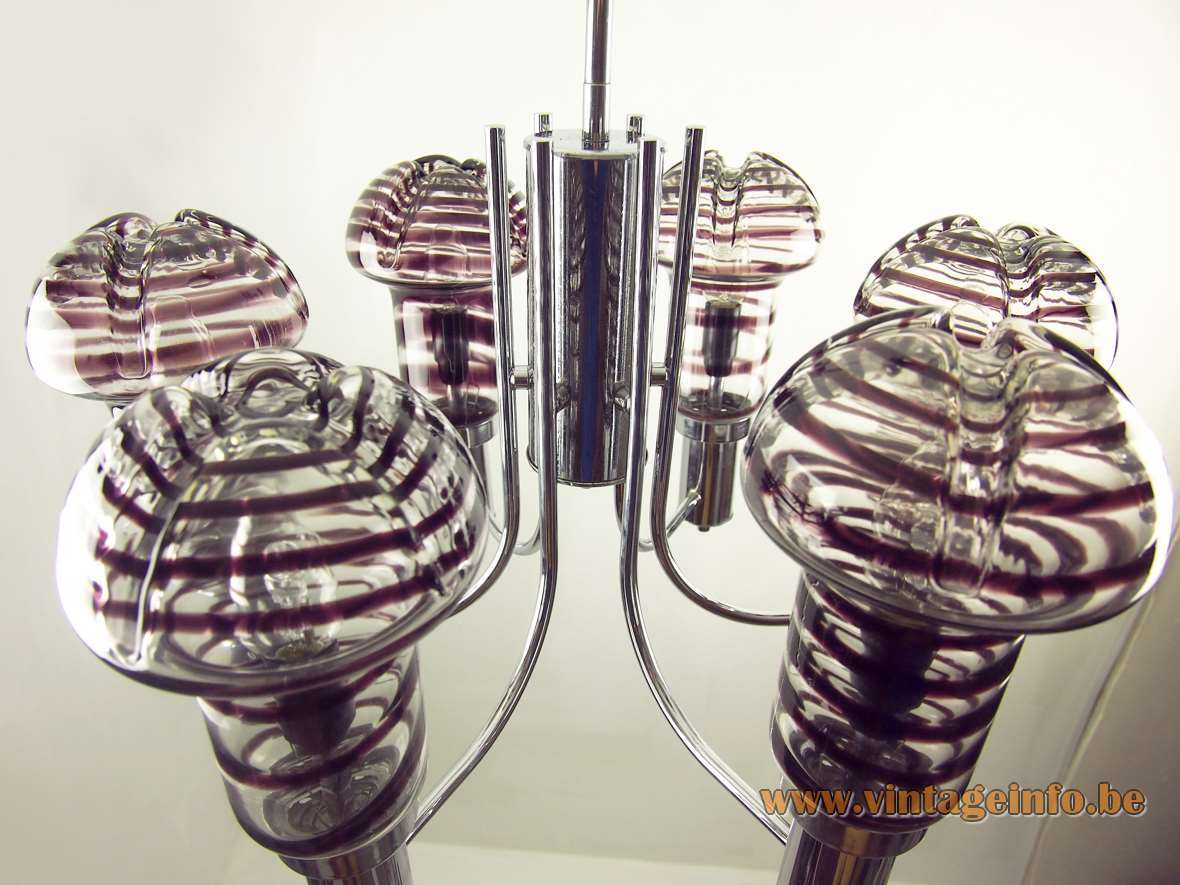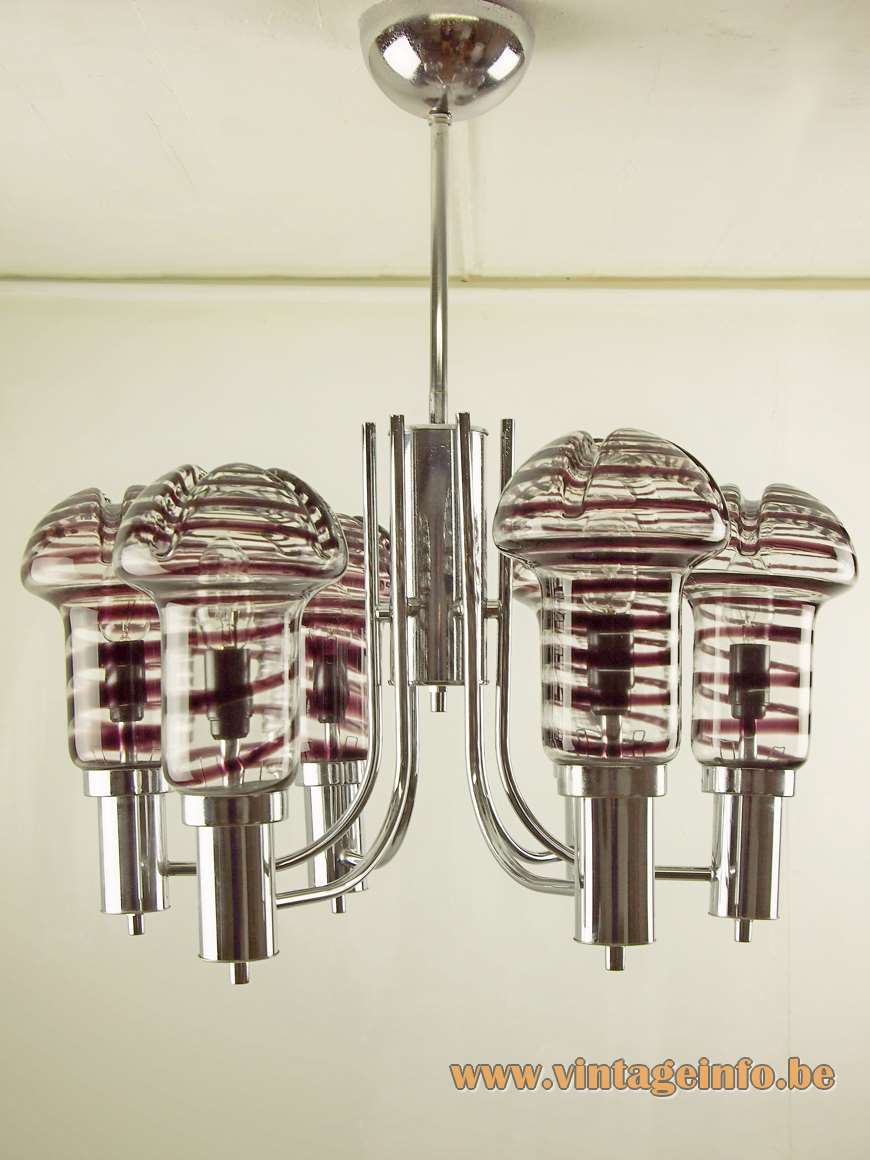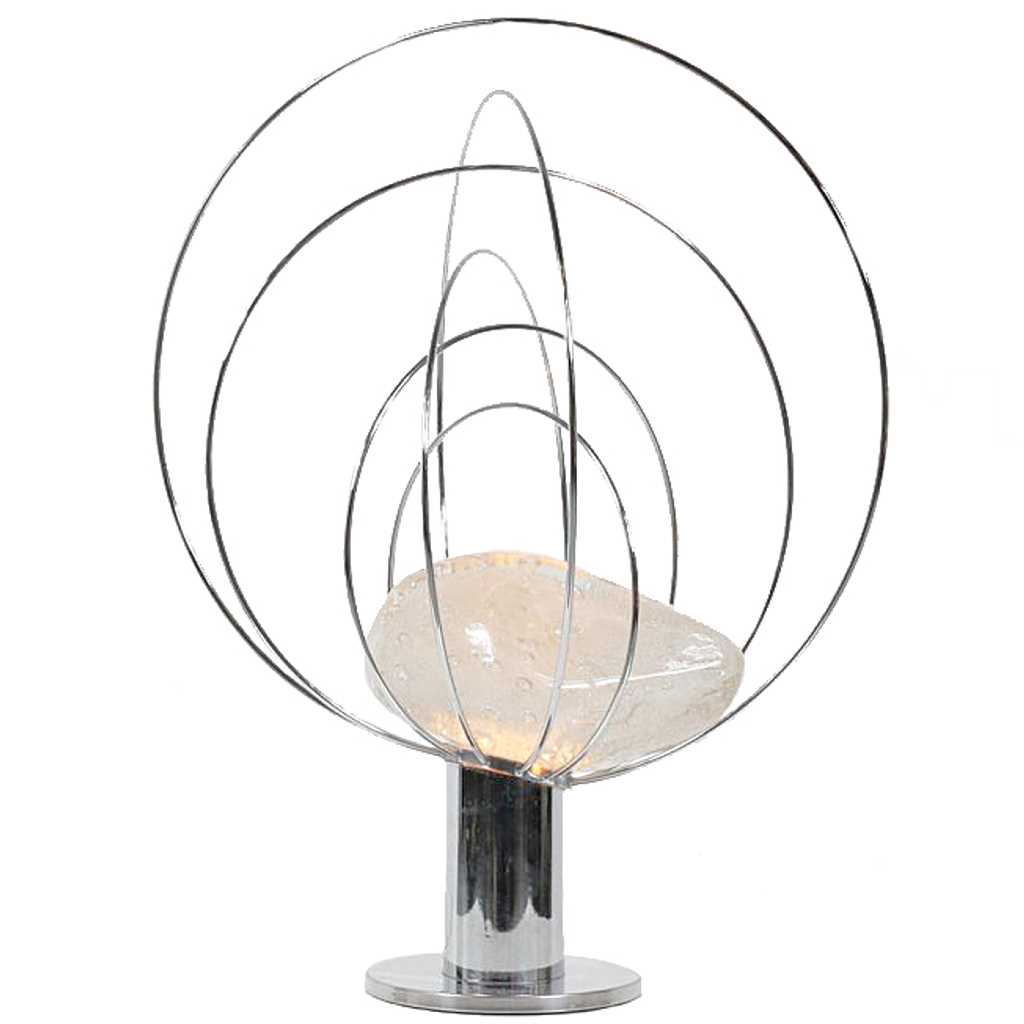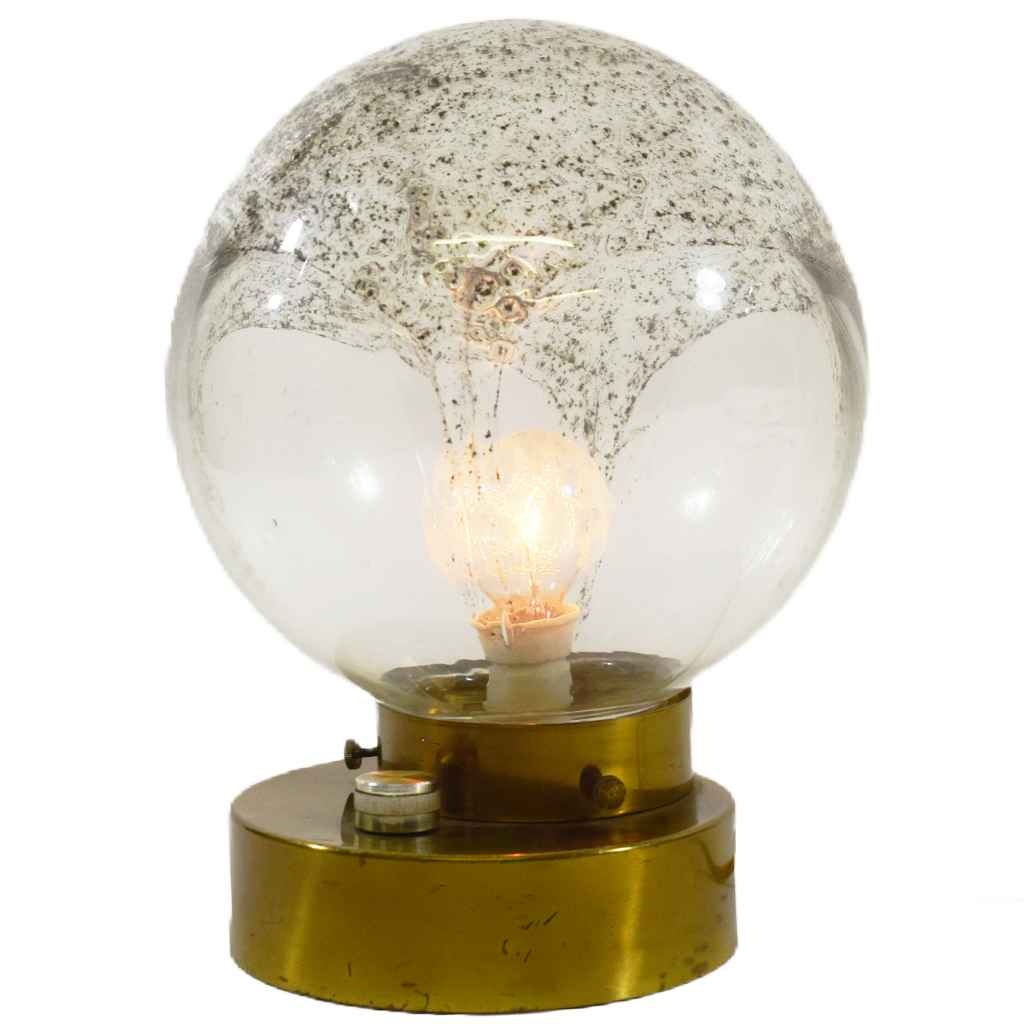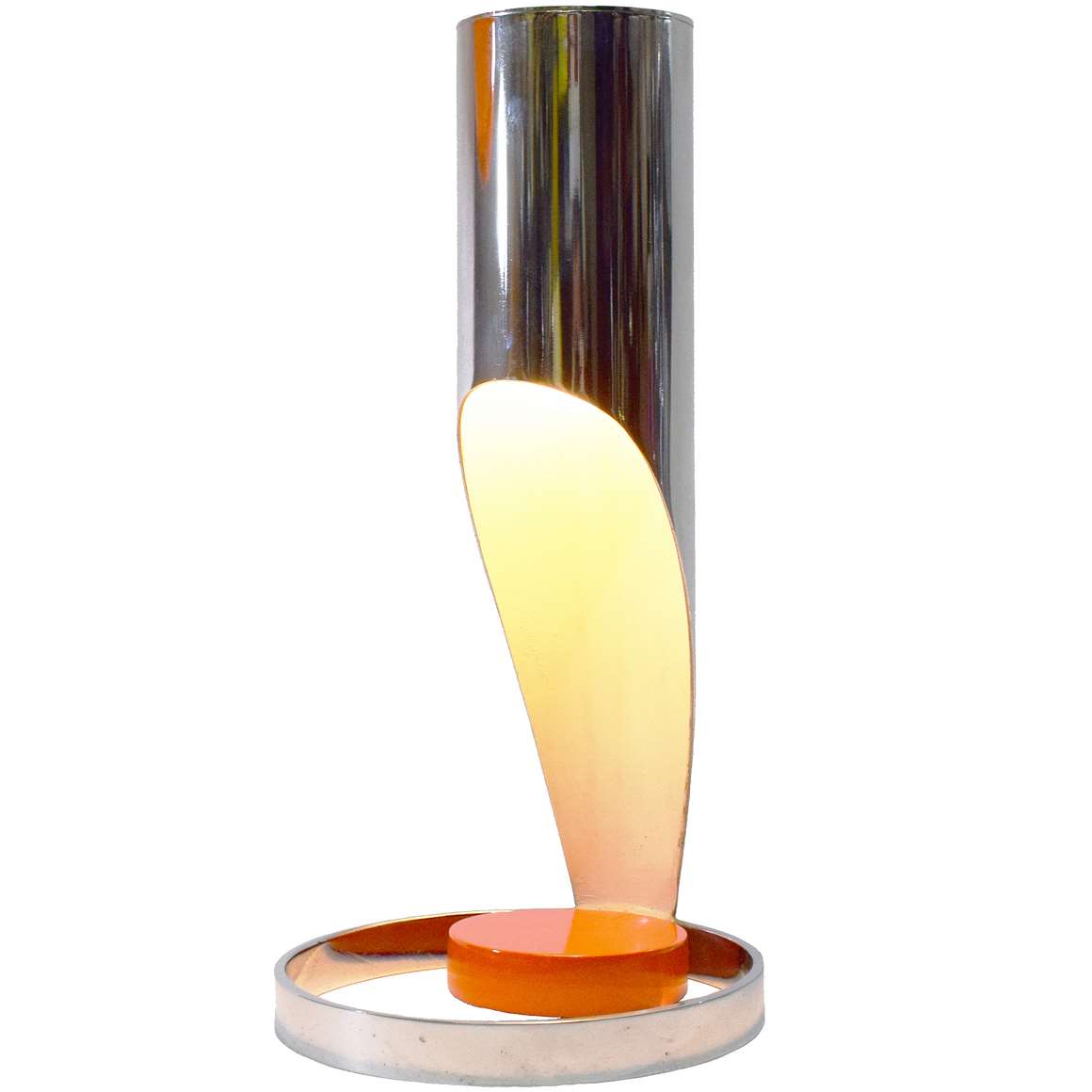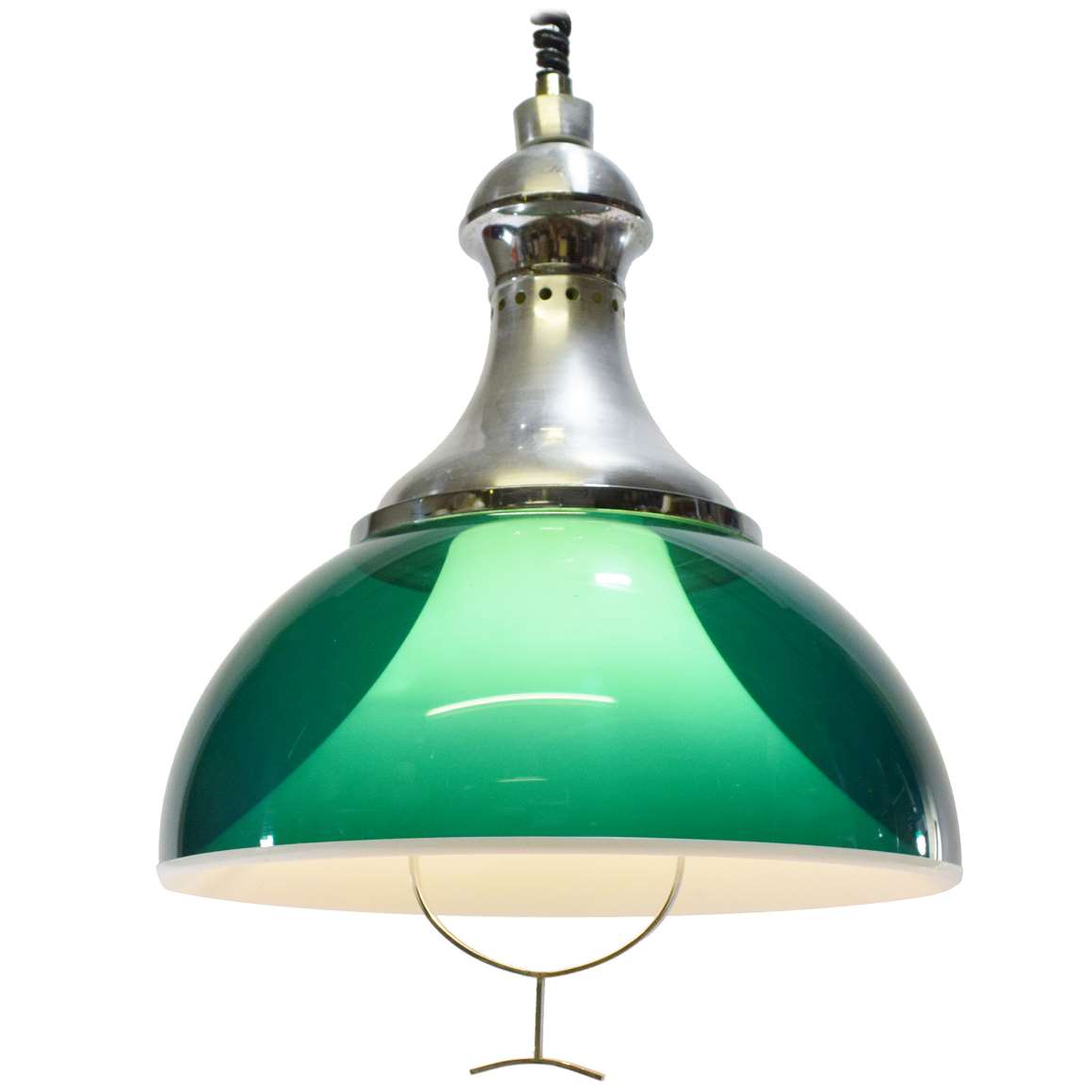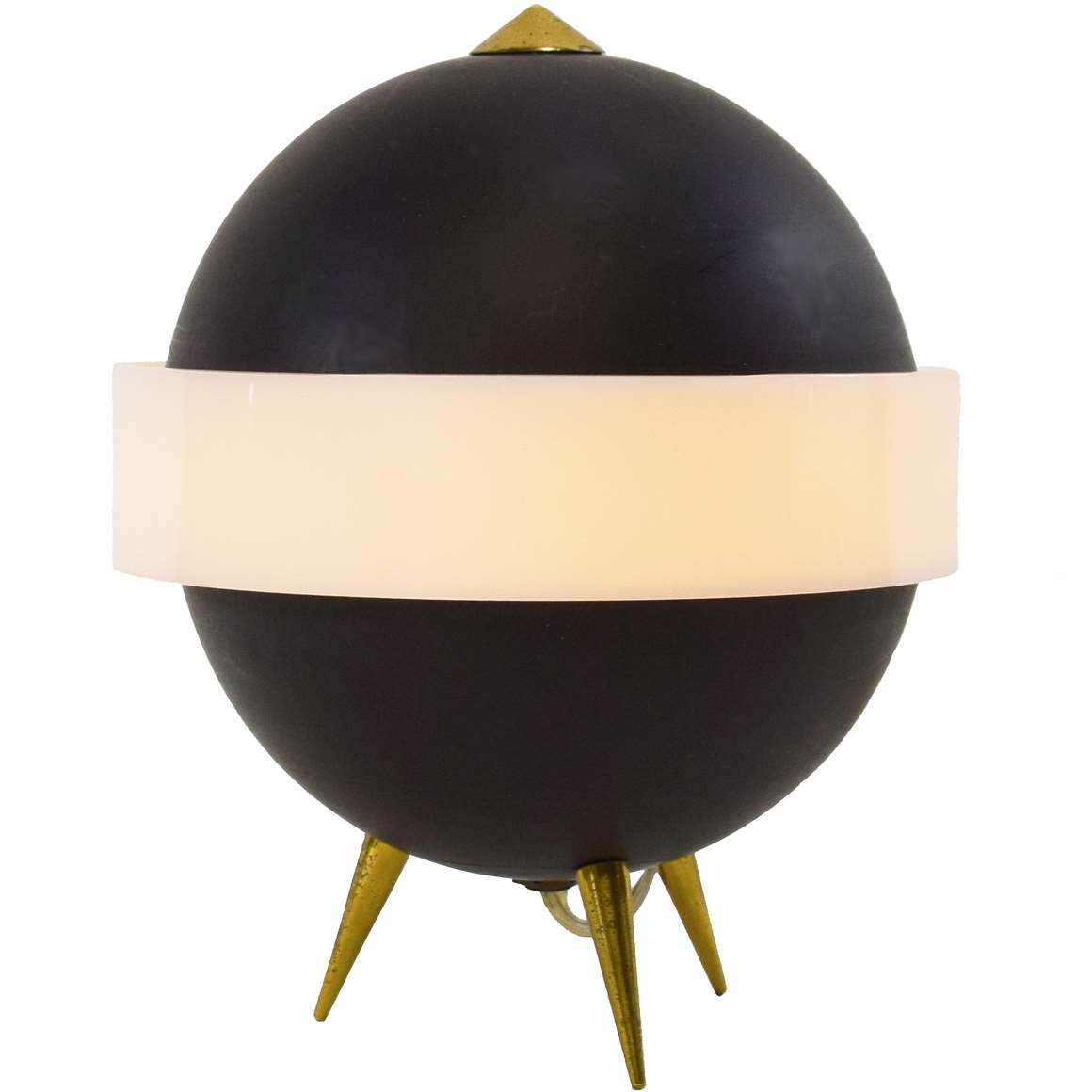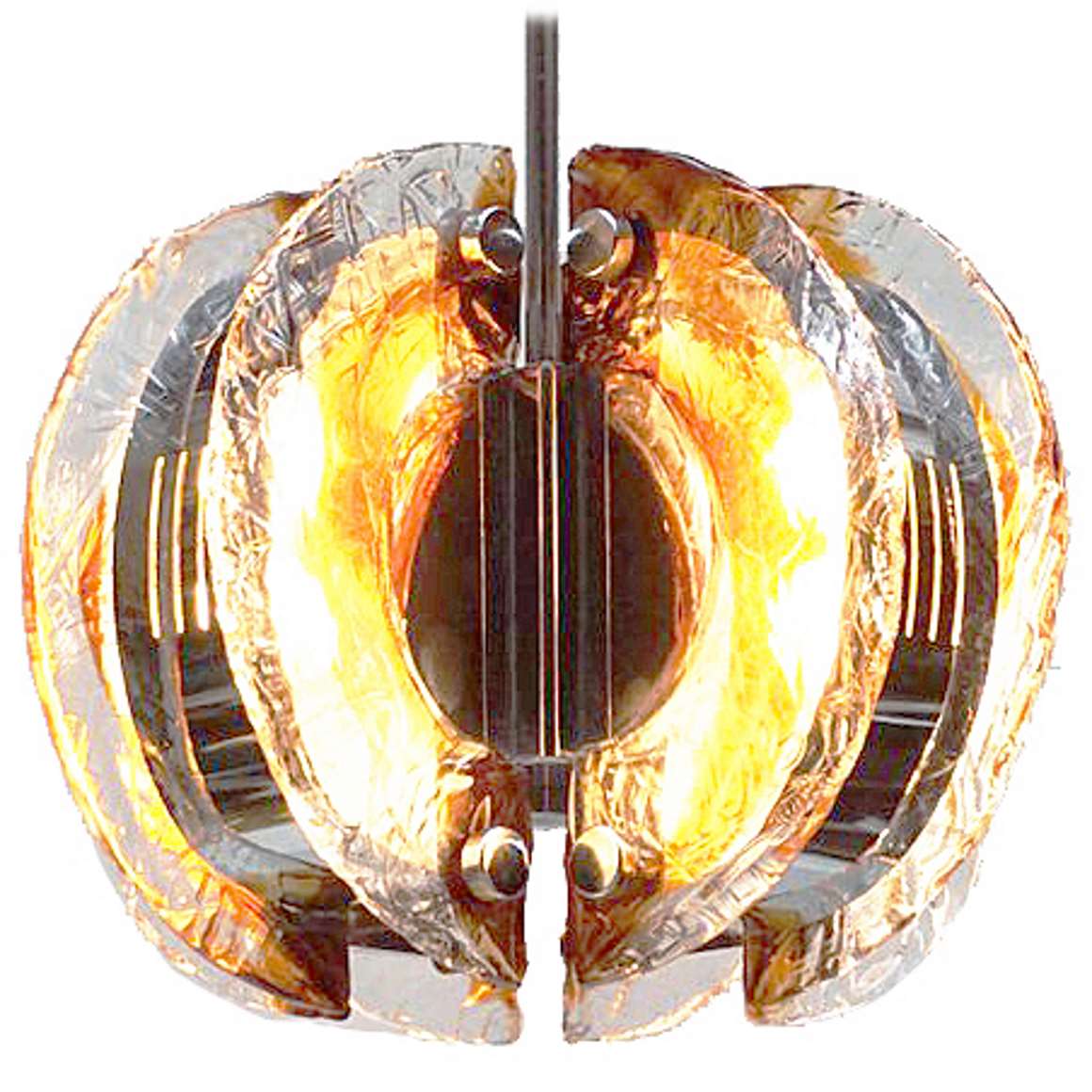Links (external links open in a new window)
Academy of Fine Arts in Venice
Similar glass floor lamp on Catawiki
Labeled table lamp by Esperia on Pamono
Table lamp by Esperia on Domusnova
Opaline Florence Glass Identification Guide
Vintageinfo
Many Thanks to Ger for the beautiful pictures.
Esperia Striped Purple Glass Chandelier
Materials: Curved chrome rods chrome tube, chrome canopy. 6 purple striped clear crystal hand blown glass, mushroom shaped lampshades. 6 Bakelite E14 sockets.
Rod Length: 60 cm / 23.62’’
Height: 42 cm / 16.53”
Width: ∅ 51 cm / 20.07”
Glass Height: 30 cm / 11.81”
Glass Width: ∅ 14 cm / 5.51”
Electricity: 6 bulbs E14, 6 x 40 watt maximum, 110/220 volt.
Any type of light bulb can be used. Not a specific one preferred.
Period: 1970s – Mid-Century Modern.
Designer: Angelo Brotto (1914 – 2002).
Manufacturer: Esperia, Via Campania, 1D, 53036 Poggibonsi, Italy.
Other versions: This Esperia striped purple glass chandelier exists in several varieties. The type of glass was used for many lamps. Table lamps, floor lamps, wall lamps, flush mounts…
Angelo Brotto
Born in Venice, Italy, in 1914, and passed away in Campiglia Marittima in 2002. Angelo Brotto studied at the Art School of Venice, where he began exhibiting his work even before graduation. In 1941 he completed his studies at the Academy of Fine Arts in Venice, distinguishing himself by winning every major student competition of his time.
In the years that followed, Brotto received numerous awards for his artistic achievements. His works have been acquired by the Gallery of Modern Art in Rome and Venice, the Rivoltella Museum in Trieste, the Venice Biennale, the Italian Ministry of National Education, the Confederazione Italiana Professionisti ed Artisti, and by several private galleries worldwide.
Esperia
Esperia was founded in 1952 in Poggibonsi, Tuscany, by three friends, Romano Conforti, Eugenio Cortigiano and Mario Moni, who shared the ambition to build a design and lighting company in post-war Italy. Initially rooted in the Tuscan glassmaking tradition, the firm soon expanded its expertise to lighting and furniture design.
During the 1960s, Esperia experienced a period of great creativity and international recognition, largely thanks to its collaboration with Venetian designer and professor Angelo Brotto. Brotto created some of the brand’s most iconic pieces, including the Quasar, Manhattan, Shangrila, Gioa, Gaspare, Ursula, Barnaba, 6038, Astrid, Natalia, Tea, Kit, Giraffa, Pagoda, and Barbarella lamps – all now emblematic of Italian design from the 1960s and 70s.
Esperia ’s designs were presented at major exhibitions such as the Salone del Mobile and Euroluce in Milan, and the company also collaborated with renowned glassmakers like Venini.
Today, Esperia continues to operate in Tuscany, maintaining in-house design and production facilities. With over 70 years of experience, the company remains dedicated to craftsmanship and innovation in contemporary lighting. Esperia designers are: Cristina Celestino, Silvano Pulcinelli and the internal design team named Centro Stile Esperia.
Esperia is also a genus of moths and an historic Italian motorcycle brand. Esperia is also a comune in the Italian province of Frosinone.
Other Striped Glass Artists
Murano glass artist Carlo Moretti used this striped/marbled/swirl glass technique for many of his designs. Also Lino Tagliapietra made many glass objects for La Murrina in this style and Toni Zuccheri designed several items for Venini. In Florence, also in Italy you find similar designs for Empoli glass from the 1960s and 1970s.
